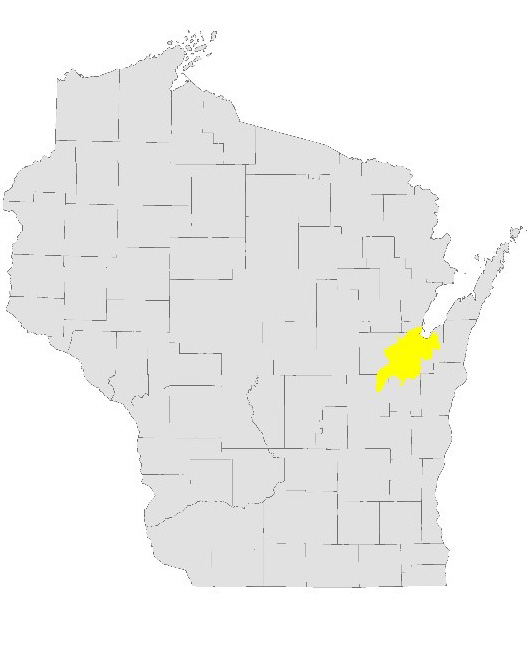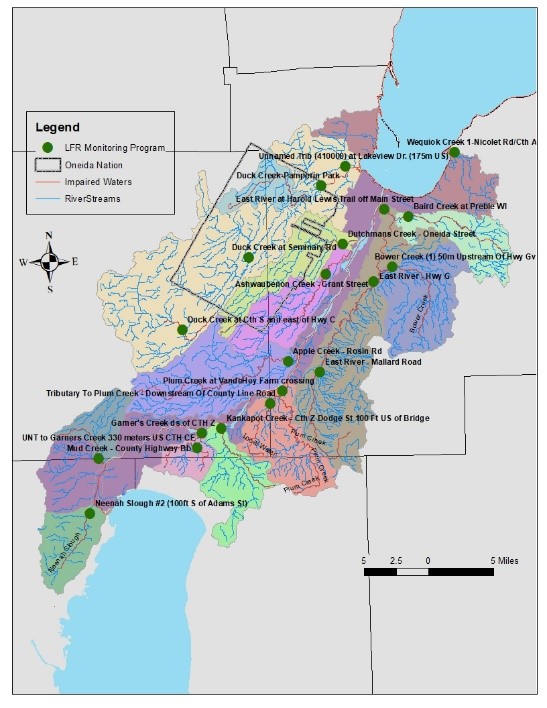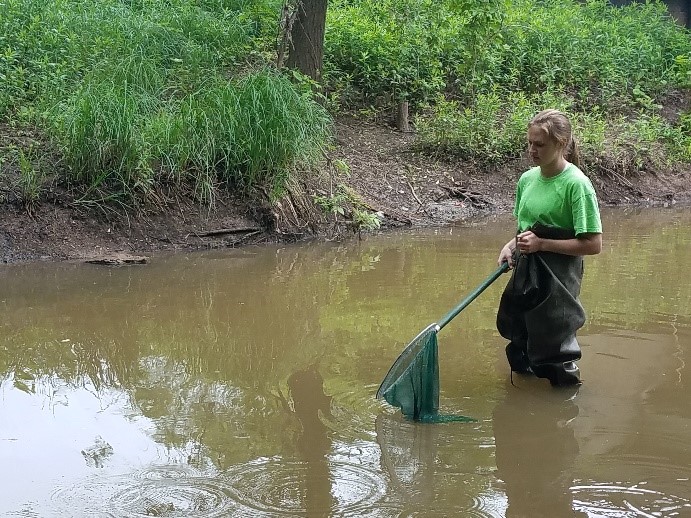Lower Fox River Basin Volunteer Monitoring Program
Lower Fox River TMDL

In May 2012, the U.S. Environmental Protection Agency (EPA) approved the Lower Fox River Basin Total Maximum Daily Load (TMDL). The TMDL set targets to improve surface water quality by reducing phosphorus and sediment loading in the watershed. In 2015, the Lower Fox River Basin Volunteer Monitoring Program was initiated to assist with monitoring goals outlined in the TMDL and evaluate TMDL implementation progress.
Want to get involved? The DNR is always looking for new, energetic and motivated volunteers. If you are interested in volunteering, please contact Katherine Wendorf, DNR Lower Fox River Basin Volunteer Monitoring Program Coordinator.
About The Volunteer Program
The program relies on volunteers to collect surface water samples monthly. Volunteers follow Water Action Volunteer (WAV) sampling protocols and report to the program coordinator to ensure consistency is being met in each sample. Samples are sent to the Wisconsin State Lab of Hygiene for sample analysis and results are sent to the program coordinator for data analysis. All sampling equipment, shipping materials and training are provided by the DNR.
Volunteer Program Specifics
20 monitoring sites across 16 tributary streams are sampled once per month from May through October. This timeframe is the primary algae and macrophyte growing season. Volunteers collect surface water samples which are analyzed for Total Phosphorus (TP), Total Suspended Solids (TSS), Dissolved Reactive Phosphorus (DRP) and Total Nitrogen (TN). In addition to collecting surface water samples, volunteers also measure streamflow and turbidity.
Nutrient And Sediment Impacts
To meet Wisconsin’s water quality criteria, tributary streams must have a median phosphorus concentration of less than 0.075 mg/L. Waters that do not meet criteria are classified as impaired. 14 of the 16 sampling streams are considered impaired due to excess total phosphorus (TP) and/or total suspended solids (TSS). Excessive phosphorus and sediment works its way through the entire river system and can have major impacts on river health. More prominent algal blooms, reduced fish habitat and low aquatic plant density are a few of the impacts that can be seen.
Program Goals
- Increase public awareness and involvement of water quality issues by engaging the public in citizen science.
- Collect accurate and reliable surface water quality data to assess long-term water quality trends and progress.
- Evaluate nutrient and sediment concentrations in the tributaries to the Lower Fox River.
- Monitor the health of the watershed over time at a regional scale.
- Evaluate the long-term effectiveness of implementation of the Lower Fox River Basin TMDL.
Streams
- Apple Creek
- Ashwaubenon Creek
- Baird Creek
- Bower Creek
- Duck Creek
- Dutchman's Creek
- East Creek
- Garner's Creek
- Kankapot Creek
- Lancaster Creek (not an impaired water)
- Mud Creek
- Neenah Slough
- Plum Creek
- Tributary to Garner's Creek
- West Plum Creek
- Wequiock Creek
Results
- Interactive Tributary Water Quality Data Spreadsheet [xls]
- 2023 Lower Fox River Basin Volunteer Monitoring Report
- 2023 Lower Fox River Basin Volunteer Monitoring Summary
- 2022 Lower Fox River Basin Volunteer Monitoring Report
- 2022 Lower Fox River Basin Volunteer Monitoring Summary
- 2020 Lower Fox River Basin Volunteer Monitoring Report
- 2019 Lower Fox River Basin Volunteer Monitoring Report
Volunteer Resources
- Lower Fox River Basin Volunteer Monitoring Fact Sheet
- Lower Fox River Basin Volunteer Manual
- Water Action Volunteer (WAV)
- Thanks to WAV for funding and supporting the Lower Fox River Basin Volunteer Monitoring Program
- Streamflow Worksheet
- Volunteer Agreement Form


